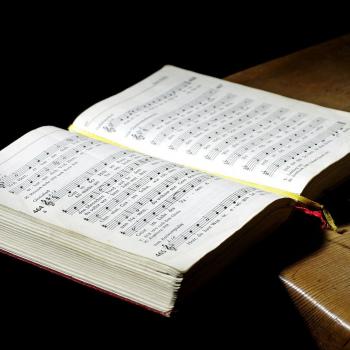As professional musician and scholar, I’d like to address some of the problems in a recent posts about worship music from the Ponder Anew blog.
Its author, Jonathan Aigner, is passionate about his topic. And I’m glad that he provokes others to think intentionally about music and worship.
I agree with many of his points. But on many we differ. And while I find his method of argument to be based too often on generalizations, my real problem is the pervasive Eurocentrism that underlies his opinions.
In a recent post he argues that the basic musical structure of Western classical hymnody is objectively better for worship than that of pop music. The problematic elements of the latter happen to be core elements of African-American music: improvisation, “emoting” (which I’ll discuss below), and rhythmic flexibility.
Jonathan is not the only person who believes in the cultural and moral superiority of Western classical music (which is the source of European hymnody.) And he is certainly not alone in arguing that “Traditional Worship” is the only musical style appropriate for church. So while I will be responding to Jonathan’s specific words in this post, I want to make it clear that my problem is principally with the system of values which his work is based on.
I’ll now take a few moments to quote Jonathan’s statements about pop music and hymnody in order to demonstrate the Eurocentric biases that undergird them. These passages come from: Why Singing Hymns the Traditional Way is Better than Singing the Pop Worship Way
“Pop music is not written to be sung by a congregation. It is not textually driven, which is part of the necessity for a poem set to music to function as a hymn.…The singing is done very individualistically, usually with heavy ad libbing, soloistic singing. The singers are generally theatrical, even when they don’t mean to be. It’s the style of music. Your favorite pop singer sings this way, and so when this sort of music is done in church, the singers are theatrical. More technically, and I’m drawing on my own training as a vocalist here, it is technically sung in a high-larynx position, which creates a feeling of emotive singing that, unfortunately, often borders on being either whiny or glib.”
Modern pop music’s most significant ingredient is African-American music – specifically Black church music. It is what has contributed the call & response structure that undergirds almost all pop songs, regardless of genre, and has for over 100 years. And, of course, gospel music is the source of the improvisatory vocal style that is a central aesthetic value of pop music.
“Emotionalism” is an epithet that has been hurled by White Europeans at non-dominant groups (particularly Blacks and women) for five hundred years. Its colonial and oppressive dimensions are clearly apparent when it is presented as the antipode of the “intellectualism” of Western European culture. Where some see “theatricality”, many others see the very location of authentic and powerful worship emanating from a subjective experience of God.
“If you’re singing a hymn text in this style, you’re not really singing a hymn. You’re singing a pop worship song that happens to use old words. Those words may be good, but they aren’t being done in a style that unifies the congregation. They aren’t being done in a way that emphasizes the text. They’re being performed at an audience, some of whom might be crooning (or, more to the point, emoting) along from their pews or stadium-style seats, but who aren’t being trained in the discipline of singing.”
I agree that the relationship between text and word in pop worship music is sometimes not good. But the same is true for hymns, which need to fit multiple strophes to the same music. This results in many awkward moments where the high point of the text does not coincide with the dramatic structure of the music.
“Hymns sung in liturgy are generally accompanied by an organ, which when played well will draw the singing out of a congregation and articulate the rhythm of the text.”
It is true that, in music with a lot of text, steady, simple rhythms allow the congregations to sing together and to understand the words sung by the group. But neither pop music nor gospel songs feature a lot of text. Rather, they communicate epigrammatically, using a small number of carefully-chosen words that are repeated. They are given nuance and meaning by the soloist as she improvises and by the congregation as they repeat (and vary) them. This is a fundamentally different approach to the way text can work in a song, and it requires a different kind of musical structure.
This is the beginning of a series of posts that will explore the ways musical structure impacts the ways we experience and worship God – individually and collectively. I’ve used the post from Ponder Anew as a springboard for this discussion because it has so clearly shown one particular type commonly found in discussions of worship styles. There is much more to be said…

















